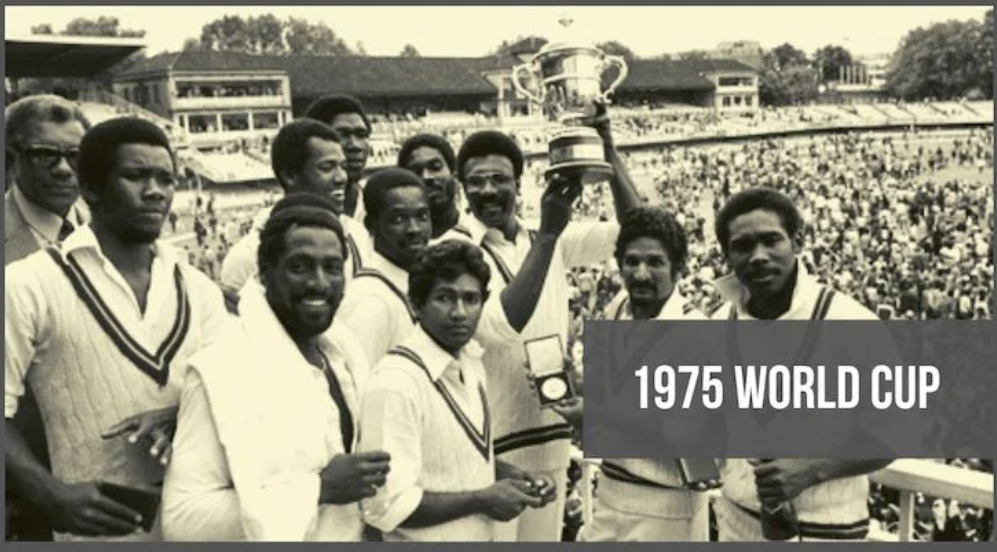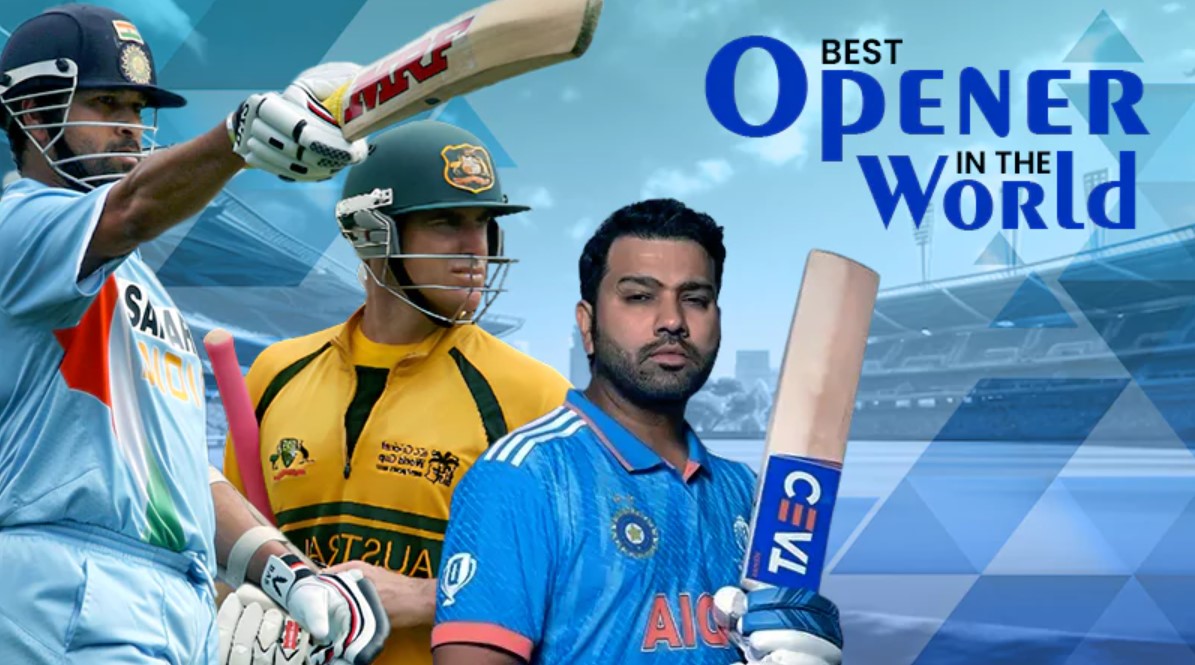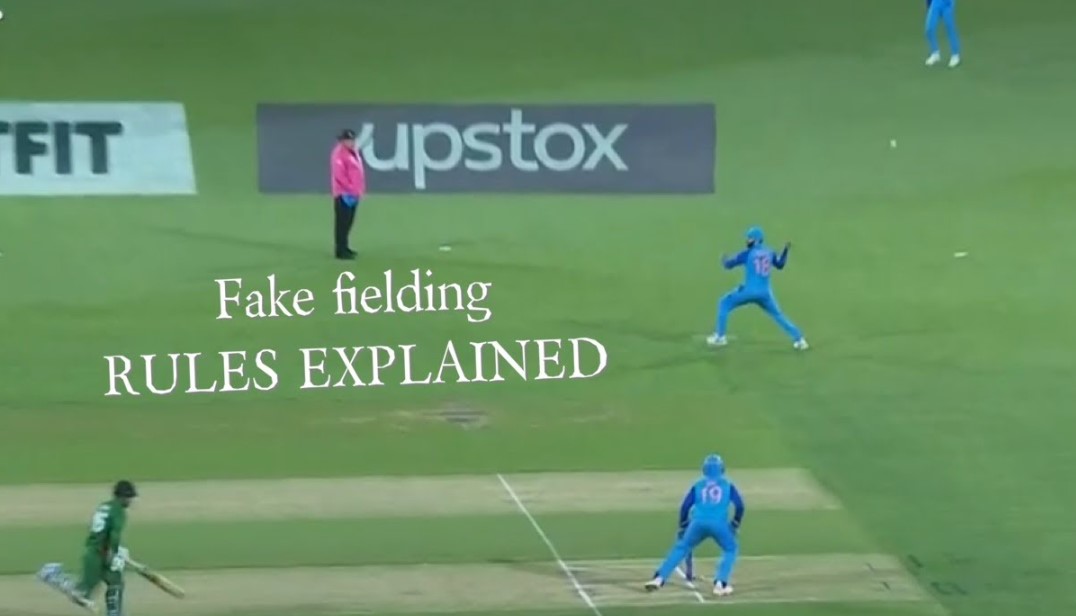Who Won the First Cricket World Cup?
Cricket, often hailed as a sport that unites nations, has witnessed numerous historic tournaments and epic battles throughout its rich history. One of the most significant events that reshaped the landscape of international cricket is the Cricket World Cup. This prestigious championship, which has become a cornerstone of the cricketing calendar, had a humble beginning with its inaugural edition. In this article, we will delve into the origins of the Cricket World Cup, explore the journey of this iconic tournament, and reveal the legendary winners who clinched the inaugural Cricket World Cup title.

The Genesis of the Cricket World Cup
Cricket enthusiasts worldwide shared a common dream - the vision of a grand event that would unite cricketing nations in a competition like no other. This dream gave birth to the idea of a Cricket World Cup, sparking passionate discussions that soon evolved into concrete plans to turn this ambitious vision into a reality. Organizers, driven by their unwavering passion for the sport, worked tirelessly to materialize this concept and orchestrate a historic tournament that would captivate cricket fans across the globe.
The first-ever Cricket World Cup
The year was 1975, and in the world of cricket, something monumental was about to take place. The sport, which had long been cherished by nations far and wide, was on the cusp of a transformational moment. It was a moment that would not only shape the future of cricket but also unite cricketing nations in a way that had never been seen before. This was the birth of the Cricket World Cup, an event that would go on to become one of the most prestigious and celebrated tournaments in the history of the sport. In this article, we delve into the origins of the Cricket World Cup and reveal the legendary winners who claimed the inaugural title. Join us on a journey back in time to witness the genesis of a cricketing tradition that continues to captivate the hearts of fans across the globe.
The Host Nation
England, often referred to as the “home of cricket,” was the fitting choice to host the inaugural Cricket World Cup in 1975. Cricket had been an integral part of the nation’s culture for centuries, and it was here that the sport had evolved and thrived. The decision to host the tournament in England was not only a nod to the country’s rich cricketing heritage but also a recognition of its status as a global cricketing hub.
The anticipation leading up to the event was palpable. The English populace, known for their passion for the sport, eagerly awaited the arrival of cricketing giants from around the world. The entire nation seemed to come alive with cricket fever. From London’s historic Lord’s Cricket Ground to the picturesque venues in the countryside, England’s iconic cricket stadiums were meticulously prepared to serve as the battlegrounds for this historic tournament.

As the tournament’s opening day drew near, cricket fans across England and beyond couldn’t contain their excitement. The prospect of witnessing the world’s finest cricketers competing on English soil was a dream come true for many. The atmosphere in the lead-up to the first match was electric, with cricket enthusiasts from all walks of life coming together to celebrate the sport they held dear.
The stage was set, and England was ready to welcome the cricketing world with open arms. The inaugural Cricket World Cup was not just a tournament; it was a celebration of cricket’s enduring legacy, a testament to the sport’s ability to transcend borders, and a moment that would forever change the landscape of the game. As the teams prepared to take the field, little did they know that they were about to embark on a journey that would etch their names in cricketing history.
The Participating Teams
Eight teams from around the world were invited to compete in the inaugural tournament. These cricketing powerhouses included England, Australia, West Indies, Pakistan, India, New Zealand, Sri Lanka, and a combined team representing East Africa. Each team brought its own unique cricketing flair and passion to the tournament, making it a true celebration of the sport’s diversity.
The Format
The format of the inaugural Cricket World Cup was a stroke of genius, designed to maximize excitement and competition. The round-robin stage, known for its fairness and unpredictability, was the heart of the tournament. In this stage, each of the eight participating teams faced off against all the others, ensuring that every team had an equal opportunity to prove their mettle.

This format created a cricketing spectacle like no other. Fans were treated to a feast of matches, each with its own storyline and drama. It was a test of skill, endurance, and nerves as teams clashed in a battle of wits and strategy. Every run scored and every wicket taken had a profound impact on the standings, adding to the tension and anticipation.
As the round-robin stage unfolded, there were surprises, upsets, and extraordinary performances. Underdogs challenged the established cricketing powerhouses, and the line between victory and defeat was often razor-thin. The round-robin format brought out the best in every team, as they aimed to secure one of the coveted top four spots that would grant them passage to the knockout stage.
The knockout stage, which followed the round-robin matches, was equally enthralling. The top four teams from the group stage advanced to the semifinals, where they faced off in do-or-die encounters. The winners of these semifinal clashes earned the right to compete in the historic final, vying for the title of the first Cricket World Cup champion.
The format’s brilliance lay in its ability to maintain the tournament’s competitiveness until the very end. No team could afford to take any match lightly, and every victory was hard-fought and well-earned. This format ensured that the Cricket World Cup would be remembered not only for its historic significance but also for the thrilling cricket it showcased. It set the standard for future editions of the tournament, cementing its place as one of cricket’s most iconic events.
The top four teams from the group stage advanced to the semifinals, setting the stage for thrilling showdowns. The winners of the semifinals would then compete in the historic final to determine the ultimate champion of the first Cricket World Cup.
Who won the first ICC World Cup: Triumph of the West Indies
The 1975 Cricket World Cup was a turning point in the history of the sport, as it marked the rise of the West Indies as a cricketing juggernaut. The West Indies team, often referred to as the “Windies,” had been steadily building a reputation for their cricketing prowess in the years leading up to the tournament. However, it was in 1975 that they truly announced their arrival on the global stage.
West Indies’ Dominance in the Group Stage
The West Indies’ campaign in the 1975 Cricket World Cup group stage was nothing short of spectacular. From the very beginning of the tournament, they asserted their cricketing dominance, sending a clear message to their competitors that they were a team on a mission.
At the heart of their success was a well-balanced and formidable squad. Their batting lineup, under the leadership of Clive Lloyd, was a powerhouse, capable of scoring big runs consistently. Batsmen like Gordon Greenidge, Alvin Kallicharran, and the iconic Vivian Richards brought a combination of elegance and power to their batting, making them a formidable force on any wicket.
However, what truly set the West Indies apart was their incredible pace bowling attack. Led by legendary fast bowlers like Andy Roberts and Michael Holding, they possessed the ability to dismantle opposition batting lineups with sheer pace and accuracy. The sight of a West Indian fast bowler charging in was enough to unsettle even the most seasoned of batsmen.
In the group stage, the West Indies left no room for doubt about their intentions. They secured comprehensive victories against every opponent they faced, showcasing their flair, panache, and all-round cricketing excellence. Their ability to perform under pressure and their unwavering self-belief made them the team to beat, and they entered the knockout stage with an aura of invincibility.
The West Indies’ dominance in the group stage not only highlighted their cricketing skill but also their mental fortitude. It was evident that they were a side with a hunger for victory, and their journey in the 1975 Cricket World Cup was just beginning to unfold.

Semifinal Showdown
The semifinals of the inaugural Cricket World Cup in 1975 were a stage for intense battles between the top four teams, each vying for a coveted spot in the grand finale.
In the first semifinal, the West Indies found themselves facing a formidable opponent in Pakistan. Pakistan had a reputation for unpredictability and possessed a talented lineup capable of springing surprises. However, the West Indies, fueled by their unwavering determination and cricketing prowess, proved too strong for the Pakistani challenge. The match was a testament to the West Indies’ skill and resilience as they secured their place in the final, setting the stage for a historic showdown.
The other semifinal featured a classic encounter between England and Australia, two cricketing giants with a rich rivalry. The high-stakes battle was marked by tension and excitement, with both teams leaving no stone unturned in their quest for victory. In the end, it was England who emerged triumphant, winning a hard-fought contest. Their victory set the stage for an epic final clash, where they would face the mighty West Indies for the inaugural Cricket World Cup title.
The semifinals not only showcased the competitive spirit of the participating teams but also added to the anticipation and drama surrounding the historic final match. Cricket enthusiasts around the world eagerly awaited the grand finale, which would determine the first-ever Cricket World Cup winner.
The Historic Final
The historic final of the first Cricket World Cup, held on June 21, 1975, at the iconic Lord’s Cricket Ground in London, was a momentous occasion that etched its place in cricketing history. The atmosphere was electric as cricket aficionados from across the globe packed the stadium to its capacity, eager to witness the crowning moment of cricketing glory.
Australia, batting first, set a challenging target of 274/8 in their allotted 60 overs. The West Indies’ chase began with an early setback, losing an early wicket, which momentarily put them under pressure. However, it was the calm and composed batting of their captain, Clive Lloyd, who played a captain’s innings, and the explosive batting of Vivian Richards that turned the tide in favor of the West Indies.
As the match approached its thrilling climax, it hung in the balance, with the outcome uncertain. The West Indies needed 7 runs from the final over, and it all came down to the last three balls. In a breathtaking finish, the West Indies clinched victory with just three balls to spare, creating history by becoming the first-ever Cricket World Cup champions.
The jubilant scenes at Lord’s that day, with players and fans celebrating, will forever be etched in the memory of cricket enthusiasts. The West Indies’ triumph marked the beginning of a new chapter in the sport of cricket, where the concept of a global tournament gained widespread acceptance and popularity, setting the stage for future editions of the Cricket World Cup.

Impact on the World of Cricket
The victory of the West Indies in the first Cricket World Cup, held in 1975, was not just a cricketing triumph; it was a moment that reverberated throughout the world of sports and beyond. It left an indelible mark on the sport of cricket and its global appeal, transcending boundaries and uniting nations in a shared love for the game. This historic win had a profound impact that extended far beyond the cricket field.
Popularizing One-Day Cricket
The 1975 Cricket World Cup was instrumental in popularizing the concept of one-day cricket. This innovative format, featuring limited overs per side and a set timeframe, provided a thrilling spectacle that resonated with fans globally. The intensity, unpredictability, and the potential for last-minute turnarounds captured the imagination of cricket enthusiasts. As a result, one-day cricket became a mainstay in international cricket, paving the way for the establishment of prestigious tournaments like the ICC Cricket World Cup. The success of this format also contributed to the evolution of T20 cricket, further expanding cricket’s appeal.
Cricket’s Global Reach
The inaugural World Cup demonstrated cricket’s ability to transcend geographical boundaries and captivate a worldwide audience. The broadcast of matches to various corners of the world exposed new regions to the sport, igniting interest and curiosity among diverse communities. This global reach laid the foundation for cricket’s expansion into previously untapped markets. Over the years, cricket’s fan base has grown significantly, making it one of the most-watched and followed sports globally. The World Cup’s role in this transformation cannot be overstated, as it acted as a catalyst for cricket’s journey towards becoming a truly global phenomenon.
Evolution of Cricketing Strategies
The Cricket World Cup of 1975 was a crucible for innovative cricketing strategies. Teams seized the opportunity to experiment with fresh approaches to both batting and bowling. New techniques, such as aggressive one-day batting styles and variations in bowling, were developed and refined during the tournament. These innovations not only contributed to the competitiveness of the World Cup but also had a lasting impact on the broader landscape of cricket. They influenced the way the game is played to this day, with players and teams continuously evolving their strategies to stay at the forefront of international cricket.
In summary, the victory of the West Indies in the first Cricket World Cup resonated deeply in the cricketing world, leading to the popularization of one-day cricket, expanding cricket’s global reach, and fostering a culture of innovation in cricketing strategies. These enduring changes have shaped the sport into what it is today, a beloved and universally recognized game with a rich history and an exciting future.

Changing Faces of World Cup Winners
Since the inaugural Cricket World Cup in 1975, the tournament has witnessed a dynamic shift in its list of champions, reflecting the ever-evolving landscape of international cricket. Several cricketing nations have risen to the occasion, leaving an indelible mark on the coveted trophy and etching their names in cricketing history.
Subsequent Cricket World Cup Champions
As the years rolled by, cricketing powerhouses such as India, Australia, Pakistan, Sri Lanka, and others have taken center stage, displaying their cricketing prowess on the grandest platform of them all. These champions have not only secured victory but have also added unique chapters to the story of cricket.
India’s Historic Triumph (1983): The heroics of Kapil Dev’s India in 1983 remain etched in the hearts of cricket fans. India’s unexpected triumph under Kapil Dev’s inspirational leadership was a watershed moment, forever changing the cricketing landscape in the country.
Australia’s Dominance (2000s): Australia’s cricketing juggernaut dominated the Cricket World Cup during the 2000s. Led by iconic captains like Steve Waugh and Ricky Ponting, Australia’s formidable squad established a dynasty of success, setting new standards for excellence in one-day cricket.
Memorable Moments and Legendary Performances
The Cricket World Cup has been a stage for unforgettable moments and performances that have become part of cricketing folklore. These instances continue to be celebrated and cherished by fans worldwide.
Sri Lanka’s Fairytale Victory (1996): Sri Lanka’s triumphant journey in the 1996 Cricket World Cup, captained by Arjuna Ranatunga, was nothing short of a fairy tale. The fearless batting of Sanath Jayasuriya and the all-round brilliance of Aravinda de Silva played pivotal roles in their historic win.
Pakistan’s Improbable Win (1992): Pakistan’s victory in 1992, led by the charismatic Imran Khan, was a story of resilience and determination. The team overcame significant challenges to secure the title, with Imran Khan’s leadership standing out as a beacon of inspiration.
Adam Gilchrist’s Blitz (2007): In the 2007 World Cup final, Adam Gilchrist’s explosive century for Australia against Sri Lanka showcased the sheer power of aggressive one-day batting. His performance underscored the transformative impact of dynamic batting in limited-overs cricket.
These moments and performances, woven into the rich tapestry of cricketing history, exemplify the enduring legacy of the Cricket World Cup. With each edition, new legends are born, and cricket enthusiasts are treated to thrilling contests and exceptional feats on the world stage, ensuring that the tournament remains a cherished part of the global cricketing calendar.

Reflecting on the First World Cup Victory
The first-ever Cricket World Cup victory by the West Indies in 1975 stands as an iconic and pivotal moment in the history of cricket. The Caribbean team’s triumph not only etched their name in the annals of the sport but also left an indelible mark on the cricketing world. Let’s delve deeper into the historical significance of this momentous occasion, exploring the jubilant celebrations and enduring commemorations that followed this historic win.
Historical Significance of West Indies’ Victory
The West Indies’ victory in the inaugural Cricket World Cup of 1975 holds immense historical significance on several fronts. Firstly, it marked the formal inception of this prestigious tournament, which has since become one of the most eagerly anticipated and watched events in the cricketing calendar, showcasing the sport’s global appeal.
The triumph of the West Indies team in 1975 also served as a compelling testament to the extraordinary talent and skill of the Caribbean cricketers. It was on this grand stage that the world witnessed the caliber of players like Clive Lloyd, Vivian Richards, Gordon Greenidge, and many more. Their outstanding performances not only secured their place as the first-ever World Cup champions but also catapulted them to the status of cricketing legends. The West Indies’ dominance in the tournament resonated for years to come and laid the foundation for their cricketing legacy.
Furthermore, the victory held a profound symbolic value for the West Indian nations. The Caribbean region is renowned for its rich cultural diversity, with each island boasting its unique traditions and identities. Cricket, however, served as a unifying force, transcending these differences and bringing the people of the West Indies together. The World Cup victory symbolized the unity and collective pride of the West Indian nations, reinforcing the belief that cricket was not merely a sport but a cultural and social bond that tied these nations together.
In essence, the West Indies’ victory in the inaugural Cricket World Cup was a momentous event that extended beyond the boundaries of sports. It marked the birth of a cricketing tradition that continues to thrive today, celebrated the exceptional talent of the Caribbean cricketers, and emphasized the unity and diversity that defines the heart of the West Indies. This historical triumph remains a cherished chapter in the annals of cricketing history, inspiring generations of cricketers and fans alike with its enduring legacy.

Conclusion
In conclusion, the first Cricket World Cup, won by the West Indies in 1975, stands as a momentous and historic event in the world of cricket. This victory marked the formal beginning of a tournament that has grown to become one of the most prestigious and anticipated events in the sport. It showcased the exceptional talent of West Indian cricketers, solidifying their reputation as cricketing legends.
Beyond the sport, the West Indies’ triumph symbolized unity and pride among the diverse nations of the Caribbean, emphasizing cricket’s role as a unifying force in the region. The historical significance of this victory continues to resonate, and its impact on the sport’s global reach and popularity is undeniable.
As cricket enthusiasts reflect on the inaugural Cricket World Cup, they celebrate not only the West Indies’ victory but also the enduring legacy it has left on the sport, from popularizing one-day cricket to influencing the evolution of cricketing strategies. It remains a cherished chapter in cricketing history, inspiring generations of cricketers and fans alike.
FAQ
Was the first Cricket World Cup held in England?
A: Yes, the first-ever Cricket World Cup was indeed held in England in 1975. The tournament marked a historic moment in cricketing history as it brought together eight cricketing nations from different corners of the world to compete in a thrilling and unprecedented event. England, with its rich cricketing traditions and iconic cricket grounds, proved to be the perfect host for this momentous occasion.
How many teams participated in the inaugural Cricket World Cup?
The inaugural Cricket World Cup saw the participation of eight teams. These cricketing powerhouses included the host nation, England, along with Australia, West Indies, Pakistan, India, New Zealand, Sri Lanka, and a combined team representing East Africa. Each team brought its own unique cricketing flair and passion to the tournament, making it a true celebration of the sport’s diversity and global appeal.
Who won the first World Cup in Cricket?
The West Indies showcased their dominance in the inaugural Cricket World Cup right from the beginning. Led by the inspirational Clive Lloyd, the West Indian team displayed exceptional skill and talent, captivating the world with their commanding performances. They secured comprehensive victories in the group stage, setting the tone for their triumphant journey through the knockout stage and eventually claiming the title of the first-ever Cricket World Cup champions.
How has the first Cricket World Cup influenced the future of cricket?
The first Cricket World Cup had a profound influence on the future of cricket. It popularized the concept of one-day cricket, leading to the creation of many prestigious tournaments like the ICC Cricket World Cup. It also showcased cricket’s potential to captivate a global audience, contributing to the sport’s widespread popularity and paving the way for a more inclusive and diverse cricketing landscape. Additionally, the tournament served as a laboratory for innovative tactics and strategies, influencing the way the game is played to this day.
Did the first Cricket World Cup have any memorable moments?
Certainly! The first Cricket World Cup in 1975 had its share of memorable moments. One of the most iconic moments was the thrilling final at Lord’s, where the West Indies secured their victory with just three balls to spare. Additionally, the tournament featured outstanding performances from legendary cricketers like Clive Lloyd, Vivian Richards, and Andy Roberts, leaving a lasting impact on cricket fans worldwide.
How did the first Cricket World Cup impact the West Indies cricket team?
The first Cricket World Cup had a profound impact on the West Indies cricket team. It established them as a formidable force in world cricket for years to come, showcasing the talent and skill of West Indian cricketers. The victory not only secured their place as the first World Cup champions but also symbolized the unity and pride of the West Indian nations, further solidifying the bond among the different Caribbean islands.







